Instruction
What happens to loft when shortening or lengthening a putter shaft?
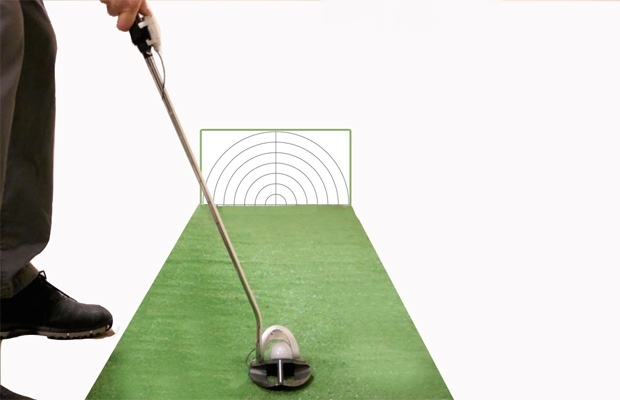
During a round of golf, the percentage of all putts made is 43. I have mentioned in my earlier articles that the putting technique should be efficient and adjusted to your mobility limitation. With increased efficiency, the amount of mishits and also the amount of time spent on your short game will decrease. An inefficient technique will give you trouble to find time to maintain your feel on the greens. It will most certainly give you trouble when the pressure is high and you are nervous. Dave Pelz mentioned in his book “Dave Pelz´s Putting Bible” concerning what should master your putt motion:
“Supplying the power, which determines how fast and how far your putts will roll, from the muscles of your wrists, hands and fingers is bad. Wrist motion (hinging) causes putter face angle variations, and hand and wrist muscles tend to tighten up and not work well under even slight pressure.”
Suppose that you already have a pretty good putting technique without too much wrist motion and an impact angle close to 0 degrees.
In this article, I want to explain what can happen when cutting or lengthening your putter and neglecting adjusting your technique to your new putter specifications. The problem concerns the conflict between the forward press and correct dynamic loft at impact.
What is the “forward press?”
The use of the “forward press” is widely used and recommended by putting gurus and professionals. The purposes of the “forward press” are several, but the majority of golfers who use it want to “kick start” the putt motion, deloft the putter or get their hands in front of the ball.
However I want to define the “forward press” like this:
When the shaft is perpendicular to the ground, the putter loft is the same as the static loft of the putter. If the golfer leans the shaft forward, the loft of the putter decreases. The distance that the golfer pushes the shaft against the target from its perpendicular position is the “forward press.”
A golfer who uses the forward press will move his hands and the grip a certain distance before launching the putting motion. The distance will, in most cases, be the same even when the putter shaft is custom fitted to the golfers specifications. For example, a golfer who requires a 31-inch putter instead of the standard length (35 inches) most often uses the same technique concerning the distance of the forward press with the shorter putter as he/she did with the standard length putter. The degree on the putter loft will be delofted even more than with the standard length putter, however.
How much the distance of the forward press affects the putter loft depends on the length of the putter. The table below shows the degrees the static putter loft will be delofted when cutting your putter from 35 inches to 31 inches (and not adjusting your forward press distance):
As you can see, even a short forward press causes a negative dynamic loft. A 35-inch putter with 2 degrees loft and a 2-inch forward press will give the putter head a dynamic loft of -1.27 degrees.
The golfer has to compensate the negative dynamic putter loft during the putt motion with his/her putt technique. Otherwise the ball will be pushed down into the grass and probably lose its intended path and speed (it will be even worse if the grass is longer).
It is really easy to cut a putter shaft, but the “forward press” is harder to adjust so the dynamic loft at impact suits the putt technique.
Some tips on minimizing the possibility for addressing and putting the ball with negative putter loft:
- Most putter head designs are not so easy to address flat on the ground. My advice is to find a putter with wider sole and adjusted sole angle so the putter does not turn either way when you place the putter head on the ground.
- If you can use your thorax rotation without any lower body movement, then there is a possibility for more consistent putt motion with less variation of the dynamic loft at impact.
- Eliminate all wrist, hand and finger action in your putt motion.
- Buy a laser point gadget that can help you see where you aiming and if you are delofting the putter too much.
Laser Point Gadget
Laser tools for aiming are commonly used by many professional golfers and coaches. The best aspect with the laser point gadgets is the instant feedback on how you are aiming without help of some other person. Another good thing with the laser point gadget is also the possibility to verify what your dynamic loft at address is just before launching the putt motion. The best practice for this is to use the laser gadget indoors when aiming at a target on the floor mat. If you are forward pressing the putter too much at address, the laser point will be below the height of the laser point source.
A way to see your dynamic loft at impact is to use the laser point gadget and also video capture your target line and target. Then you can use the slow-motion function and easily find where the pointer appears at impact.
For more information on the laser point gadget, visit the site http://www.thesmartgolfer.com/
Conclusion
When changing the length of the putter you should also check your dynamic loft at impact to be sure that your technique can also produce the correct loft at impact with the new putter length.
If you would like to receive the chart with the loft and forward press distance, email me.
Instruction
The Wedge Guy: Beating the yips into submission

There may be no more painful affliction in golf than the “yips” – those uncontrollable and maddening little nervous twitches that prevent you from making a decent stroke on short putts. If you’ve never had them, consider yourself very fortunate (or possibly just very young). But I can assure you that when your most treacherous and feared golf shot is not the 195 yard approach over water with a quartering headwind…not the extra tight fairway with water left and sand right…not the soft bunker shot to a downhill pin with water on the other side…No, when your most feared shot is the remaining 2- 4-foot putt after hitting a great approach, recovery or lag putt, it makes the game almost painful.
And I’ve been fighting the yips (again) for a while now. It’s a recurring nightmare that has haunted me most of my adult life. I even had the yips when I was in my 20s, but I’ve beat them into submission off and on most of my adult life. But just recently, that nasty virus came to life once again. My lag putting has been very good, but when I get over one of those “you should make this” length putts, the entire nervous system seems to go haywire. I make great practice strokes, and then the most pitiful short-stroke or jab at the ball you can imagine. Sheesh.
But I’m a traditionalist, and do not look toward the long putter, belly putter, cross-hand, claw or other variation as the solution. My approach is to beat those damn yips into submission some other way. Here’s what I’m doing that is working pretty well, and I offer it to all of you who might have a similar affliction on the greens.
When you are over a short putt, forget the practice strokes…you want your natural eye-hand coordination to be unhindered by mechanics. Address your putt and take a good look at the hole, and back to the putter to ensure good alignment. Lighten your right hand grip on the putter and make sure that only the fingertips are in contact with the grip, to prevent you from getting to tight.
Then, take a long, long look at the hole to fill your entire mind and senses with the target. When you bring your head/eyes back to the ball, try to make a smooth, immediate move right into your backstroke — not even a second pause — and then let your hands and putter track right back together right back to where you were looking — the HOLE! Seeing the putter make contact with the ball, preferably even the forward edge of the ball – the side near the hole.
For me, this is working, but I am asking all of you to chime in with your own “home remedies” for the most aggravating and senseless of all golf maladies. It never hurts to have more to fall back on!
Instruction
Looking for a good golf instructor? Use this checklist

Over the last couple of decades, golf has become much more science-based. We measure swing speed, smash factor, angle of attack, strokes gained, and many other metrics that can really help golfers improve. But I often wonder if the advancement of golf’s “hard” sciences comes at the expense of the “soft” sciences.
Take, for example, golf instruction. Good golf instruction requires understanding swing mechanics and ball flight. But let’s take that as a given for PGA instructors. The other factors that make an instructor effective can be evaluated by social science, rather than launch monitors.
If you are a recreational golfer looking for a golf instructor, here are my top three points to consider.
1. Cultural mindset
What is “cultural mindset? To social scientists, it means whether a culture of genius or a culture of learning exists. In a golf instruction context, that may mean whether the teacher communicates a message that golf ability is something innate (you either have it or you don’t), or whether golf ability is something that can be learned. You want the latter!
It may sound obvious to suggest that you find a golf instructor who thinks you can improve, but my research suggests that it isn’t a given. In a large sample study of golf instructors, I found that when it came to recreational golfers, there was a wide range of belief systems. Some instructors strongly believed recreational golfers could improve through lessons. while others strongly believed they could not. And those beliefs manifested in the instructor’s feedback given to a student and the culture created for players.
2. Coping and self-modeling can beat role-modeling
Swing analysis technology is often preloaded with swings of PGA and LPGA Tour players. The swings of elite players are intended to be used for comparative purposes with golfers taking lessons. What social science tells us is that for novice and non-expert golfers, comparing swings to tour professionals can have the opposite effect of that intended. If you fit into the novice or non-expert category of golfer, you will learn more and be more motivated to change if you see yourself making a ‘better’ swing (self-modeling) or seeing your swing compared to a similar other (a coping model). Stay away from instructors who want to compare your swing with that of a tour player.
3. Learning theory basics
It is not a sexy selling point, but learning is a process, and that process is incremental – particularly for recreational adult players. Social science helps us understand this element of golf instruction. A good instructor will take learning slowly. He or she will give you just about enough information that challenges you, but is still manageable. The artful instructor will take time to decide what that one or two learning points are before jumping in to make full-scale swing changes. If the instructor moves too fast, you will probably leave the lesson with an arm’s length of swing thoughts and not really know which to focus on.
As an instructor, I develop a priority list of changes I want to make in a player’s technique. We then patiently and gradually work through that list. Beware of instructors who give you more than you can chew.
So if you are in the market for golf instruction, I encourage you to look beyond the X’s and O’s to find the right match!
Instruction
What Lottie Woad’s stunning debut win teaches every golfer

Most pros take months, even years, to win their first tournament. Lottie Woad needed exactly four days.
The 21-year-old from Surrey shot 21-under 267 at Dundonald Links to win the ISPS Handa Women’s Scottish Open by three shots — in her very first event as a professional. She’s only the third player in LPGA history to accomplish this feat, joining Rose Zhang (2023) and Beverly Hanson (1951).
But here’s what caught my attention as a coach: Woad didn’t win through miraculous putting or bombing 300-yard drives. She won through relentless precision and unshakeable composure. After watching her performance unfold, I’m convinced every golfer — from weekend warriors to scratch players — can steal pages from her playbook.
Precision Beats Power (And It’s Not Even Close)
Forget the driving contests. Woad proved that finding greens matters more than finding distance.
What Woad did:
• Hit it straight, hit it solid, give yourself chances
• Aimed for the fat parts of greens instead of chasing pins
• Let her putting do the talking after hitting safe targets
• As she said, “Everyone was chasing me today, and managed to maintain the lead and played really nicely down the stretch and hit a lot of good shots”
Why most golfers mess this up:
• They see a pin tucked behind a bunker and grab one more club to “go right at it”
• Distance becomes more important than accuracy
• They try to be heroic instead of smart
ACTION ITEM: For your next 10 rounds, aim for the center of every green regardless of pin position. Track your greens in regulation and watch your scores drop before your swing changes.
The Putter That Stayed Cool Under Fire
Woad started the final round two shots clear and immediately applied pressure with birdies at the 2nd and 3rd holes. When South Korea’s Hyo Joo Kim mounted a charge and reached 20-under with a birdie at the 14th, Woad didn’t panic.
How she responded to pressure:
• Fired back with consecutive birdies at the 13th and 14th
• Watched Kim stumble with back-to-back bogeys
• Capped it with her fifth birdie of the day at the par-5 18th
• Stayed patient when others pressed, pressed when others cracked
What amateurs do wrong:
• Get conservative when they should be aggressive
• Try to force magic when steady play would win
• Panic when someone else makes a move
ACTION ITEM: Practice your 3-6 foot putts for 15 minutes after every range session. Woad’s putting wasn’t spectacular—it was reliable. Make the putts you should make.
Course Management 101: Play Your Game, Not the Course’s Game
Woad admitted she couldn’t see many scoreboards during the final round, but it didn’t matter. She stuck to her game plan regardless of what others were doing.
Her mental approach:
• Focused on her process, not the competition
• Drew on past pressure situations (Augusta National Women’s Amateur win)
• As she said, “That was the biggest tournament I played in at the time and was kind of my big win. So definitely felt the pressure of it more there, and I felt like all those experiences helped me with this”
Her physical execution:
• 270-yard drives (nothing flashy)
• Methodical iron play
• Steady putting
• Everything effective, nothing spectacular
ACTION ITEM: Create a yardage book for your home course. Know your distances to every pin, every hazard, every landing area. Stick to your plan no matter what your playing partners are doing.
Mental Toughness Isn’t Born, It’s Built
The most impressive part of Woad’s win? She genuinely didn’t expect it: “I definitely wasn’t expecting to win my first event as a pro, but I knew I was playing well, and I was hoping to contend.”
Her winning mindset:
• Didn’t put winning pressure on herself
• Focused on playing well and contending
• Made winning a byproduct of a good process
• Built confidence through recent experiences:
- Won the Women’s Irish Open as an amateur
- Missed a playoff by one shot at the Evian Championship
- Each experience prepared her for the next
What this means for you:
• Stop trying to shoot career rounds every time you tee up
• Focus on executing your pre-shot routine
• Commit to every shot
• Stay present in the moment
ACTION ITEM: Before each round, set process goals instead of score goals. Example: “I will take three practice swings before every shot” or “I will pick a specific target for every shot.” Let your score be the result, not the focus.
The Real Lesson
Woad collected $300,000 for her first professional victory, but the real prize was proving that fundamentals still work at golf’s highest level. She didn’t reinvent the game — she simply executed the basics better than everyone else that week.
The fundamentals that won:
• Hit more fairways
• Find more greens
• Make the putts you should make
• Stay patient under pressure
That’s something every golfer can do, regardless of handicap. Lottie Woad just showed us it’s still the winning formula.
FINAL ACTION ITEM: Pick one of the four action items above and commit to it for the next month. Master one fundamental before moving to the next. That’s how champions are built.
PGA Professional Brendon Elliott is an award-winning coach and golf writer. You can check out his writing work and learn more about him by visiting BEAGOLFER.golf and OneMoreRollGolf.com. Also, check out “The Starter” on RG.org each Monday.
Editor’s note: Brendon shares his nearly 30 years of experience in the game with GolfWRX readers through his ongoing tip series. He looks forward to providing valuable insights and advice to help golfers improve their game. Stay tuned for more Tips!


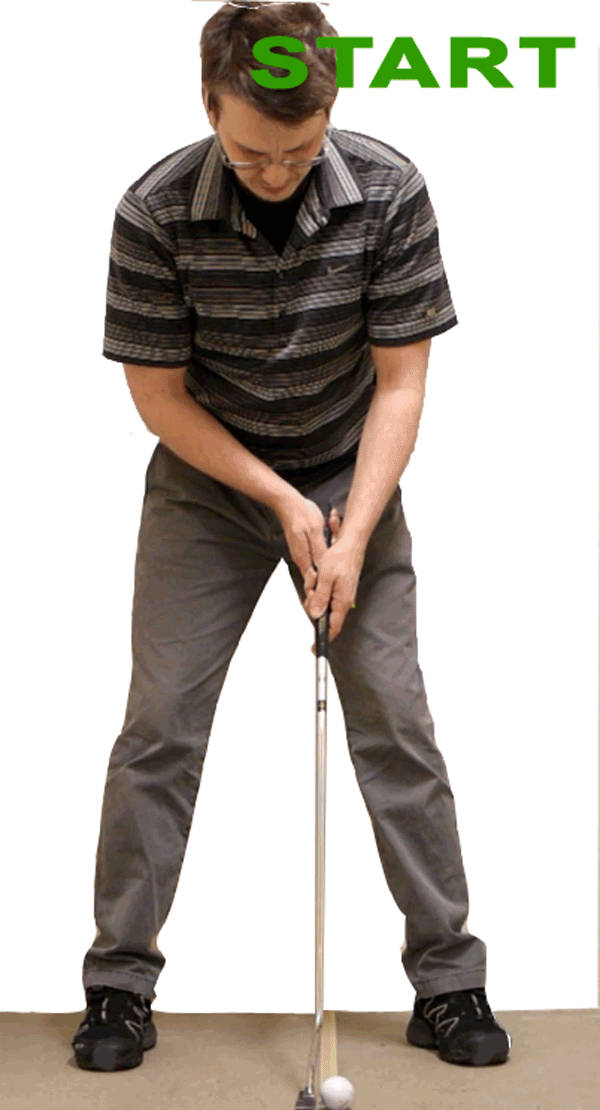
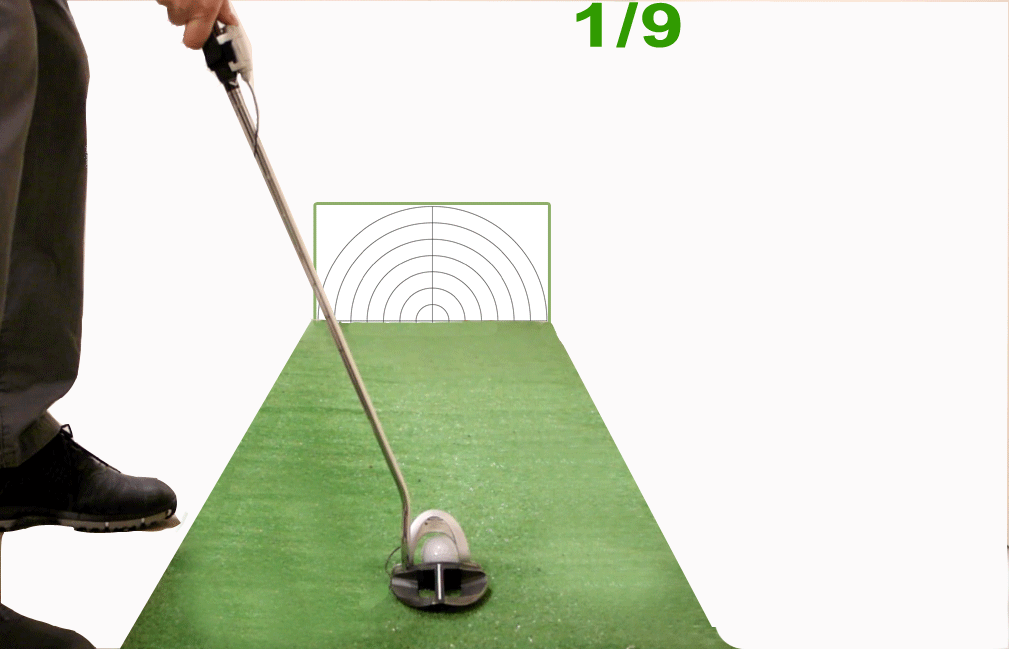





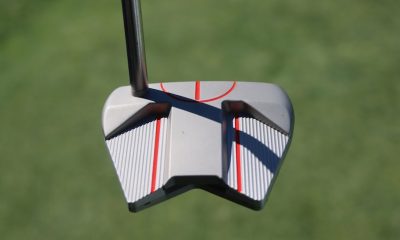



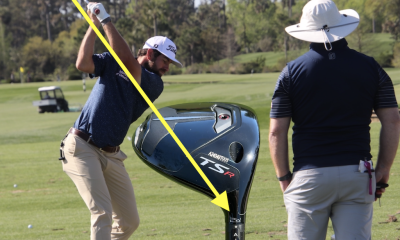











froneputt
Mar 29, 2014 at 1:02 am
I don’t see the advantage of the forward press — it’s old school and a way to jump-start the rhythm of the stroke. BUT adjusting loft may also adjust the face slightly — I think you’re introducing error. Is it one reason Rory goes hot and cold? I prefer no forward press and no freezing over the putt. Other professional instructors have advised to feel almost imperceptible movement as you are addressing the ball so you are not ever “frozen” over a putt – you retain your athleticism, always keeping an eye on your line and pulling the trigger without lingering.
Rich
Mar 28, 2014 at 6:32 am
Are you guys serious? Why would you want to have all this crap in your head when you’re over the ball. Step up, line up and putt. It’s that simple
ddgg
Mar 26, 2014 at 7:36 pm
that’s a nice looking putter
Gary
Mar 26, 2014 at 3:14 pm
Some authors have noted the “shaft angle illusion”, which is when you take your putting stance and look down at a putter shaft that appears vertical, but isn’t in reality. This is bad, since you want your rise angle to be greater than dynamic loft to put a good roll on the ball. I think pros are forward pressing to ensure that the putter shaft is vertical and to ward off adding loft at impact through backward shaft lean.
billy
Mar 26, 2014 at 2:30 pm
I agree the forward press seems odd and does not work for me either however I see many of the top players in the world use it so it must have merit on some level.
Ed LeBeau
Mar 26, 2014 at 11:57 am
Simon, the advantage of the forward press has eluded me. When I see players use it, I see them align the putter, take their stance, and then forward press. If you use the alignment laser you find that it is near impossible to forward press without loosing the setup alignment. What are your thoughts about this?
Simon Selin
Mar 26, 2014 at 3:14 pm
Ed, Thanks for your comment. My view of the forward press follows your opinion. The more actions with your hands before impact, the more possibilities for errors such as alignment. However the forward press can help people “kick start” the putt motion instead of freezing over the golf ball. Another thing that the forward press can help the golfer with is the hinging and pronation of the right wrist (for RH players).